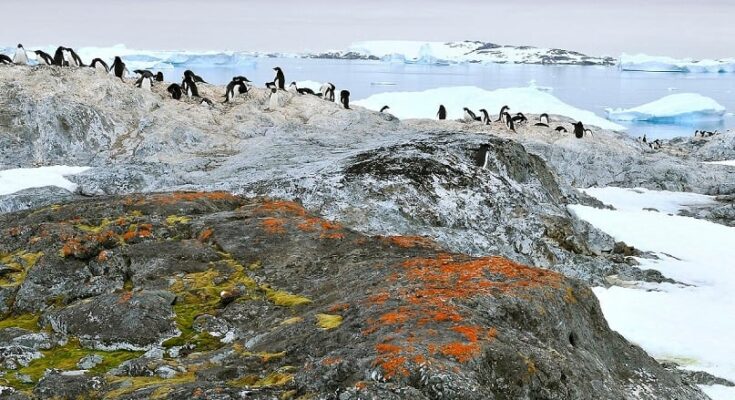
Parts of frozen Antarctica are turning green due to the growth of plants as the region is hit by extreme weather phenomena, generating concern about how the vast continent is changing.
Scientists are alarmed by the speed of the phenomenon and use satellite images and data to analyze the levels of damage on the Antarctic Peninsula, the most extreme, remote, isolated wild area.
They have found that the long mountain range in the north direction, towards the edge of South America, is warming much faster than the global average.
The flora, which is mainly moss, in this harsh environment has increased incredibly in the last four decades, according to a study published in the journal Nature Geoscience. The study was conducted by scientists at the Universities of Exeter and Hertfordshire in England and the British Antarctic Survey.
Specifically, moss had covered less than 0.863 square kilometers of the Antarctic Peninsula in 1986, but it amounted to 11.947 square kilometers (over 4.6 sq. mi.) of coverage in 2021, according to the study.
The rate at which the region has been turning green for nearly four decades has also accelerated, with an increase of over 30 percent between 2016 and 2021.
Global warming is the cause
Scientists are certain that the phenomenon, which is visible from space via NASA satellite, is anthropogenic. Antarctica, the coldest place on Earth, has recently been hit by extreme temperatures due to global warming.
This summer, parts of the world experienced record-breaking heat waves with temperatures rising to 10 degrees Celsius (50 degrees Fahrenheit) above normal since mid-July, the most extreme temperature deviations that have ever been recorded.
As pollution from fossil fuels continues to warm the world, Antarctica will continue to warm, and this greening is likely to accelerate, scientists predict. This suggests future widespread changes in the Antarctic Peninsula’s terrestrial ecosystems and their long-term functioning
The more the peninsula in Antarctica is active, the more land will appear and the more likely the area will become more favorable for invasive species that potentially threaten the autophyte wildlife.
The action could also reduce the planet’s ability to reflect solar radiation back into space because darker surfaces absorb more heat. These effects will likely only be local but could help to further accelerate the growth of plant life, as the climate continues to warm, changing the iconic landscape of Antarctica.
While the actual flora increase in the area is limited, the percentage increase is dramatic and shows that the landscape alteration in Antarctica is expanding, albeit slowly.
The next step for scientists would be to investigate how plants colonize the recently exposed warm areas of the Antarctic as glaciers recede further.
[With information from CNN]



